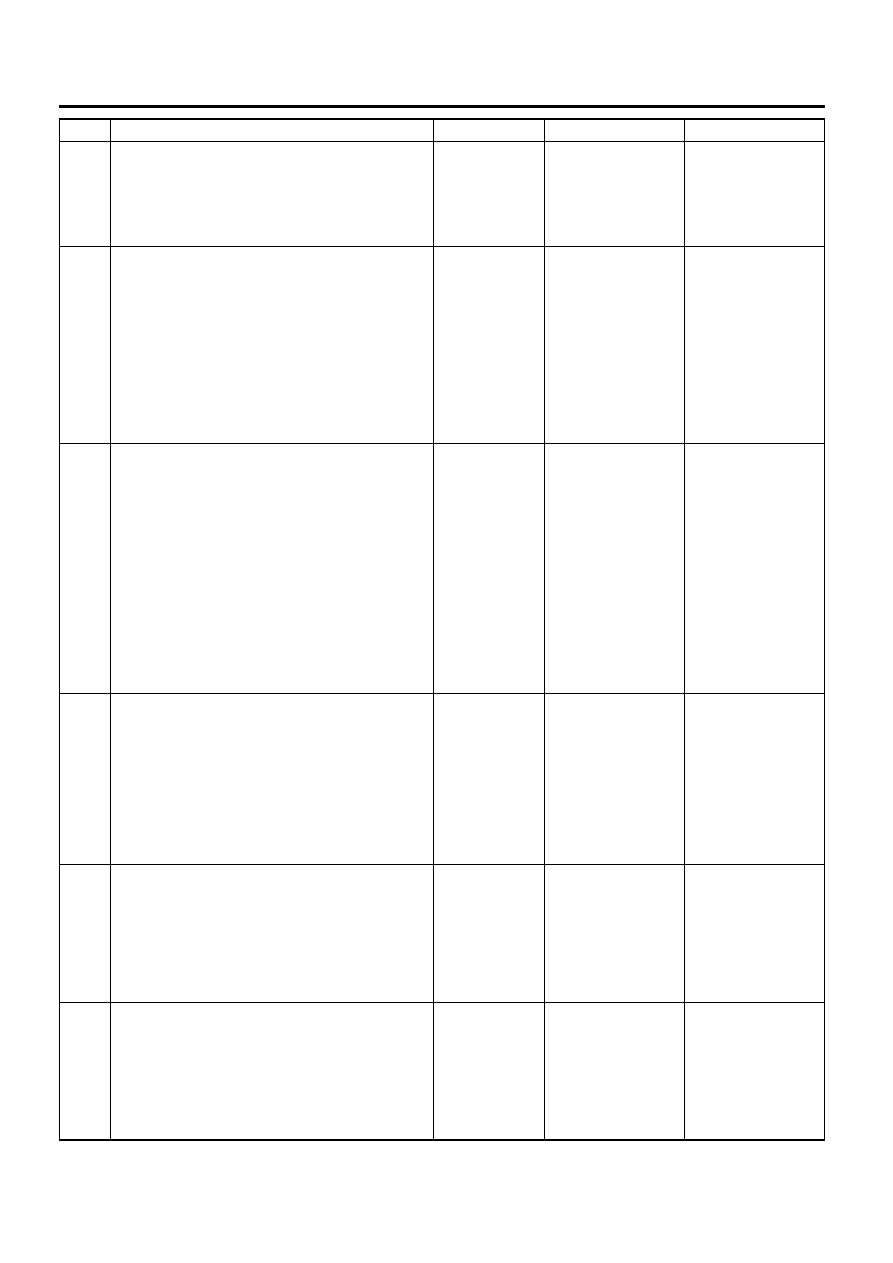Isuzu N-Series. Manual - part 680

6E-142 Engine Control System (4HK1)
6
1.
Inspect for an intermittent and for a poor
connection at the in-line harness connector
(pin 8 of H-125 connector).
2.
Repair the connection(s) as necessary.
Did you find and correct the condition?
—
Go to Step 15
Go to Step 7
7
1.
Remove the cylinder head cover. Refer to Fuel
Injector Replacement in this section.
2.
Inspect the fuel injector harness for loose
injector terminal nuts, objects touching injector
terminals.
3.
Inspect for an intermittent and for a poor
connection at the in-line harness connector
(pin 8 of H-126 connector).
4.
Repair the connection(s) as necessary.
Did you find and correct the condition?
—
Go to Step 15
Go to Step 8
8
1.
Test the cylinder number 4 fuel injector
solenoid control circuit between the fuel
injector terminal (pins 1, 2 and 3 of E-141
connector) and the in-line harness connector
(pins 1, 4 and 8 of H-126 connector) for the
following conditions:
• An open circuit
• A short to the common 1 fuel injector
drive circuit
• High resistance
2.
Repair or replace the injector harness as
necessary.
Did you find and correct the condition?
—
Go to Step 15
Go to Step 13
9
1.
Test the cylinder number 4 fuel injector
solenoid control circuit and common 1 fuel
injector drive circuit for a short to each other
between the engine control module (ECM)
(pins 117 and 121 of E-111 connector) and the
in-line harness connector (pins 1 or 4 and 8 of
H-125 connector).
2.
Repair the circuit(s) as necessary.
Did you find and correct the condition?
—
Go to Step 15
Go to Step 14
10
1.
Test the cylinder number 4 fuel injector
solenoid control circuit between the ECM (pin
117 of E-111 connector) and the in-line
harness connector (pin 8 of H-125 connector)
for a short to battery or ignition voltage.
2.
Repair the circuit(s) as necessary.
Did you find and correct the condition?
—
Go to Step 15
Go to Step 14
11
1.
Test the cylinder number 4 fuel injector
solenoid control circuit between the ECM (pin
117 of E-111 connector) and the in-line
harness connector (pin 8 of H-125 connector)
for an open circuit or high resistance.
2.
Repair the circuit(s) as necessary.
Did you find and correct the condition?
—
Go to Step 15
Go to Step 12
Step
Action
Value(s)
Yes
No